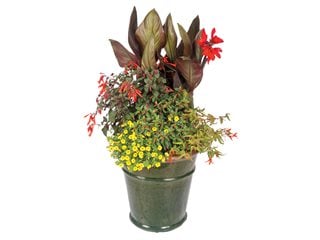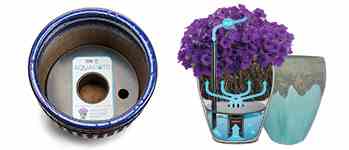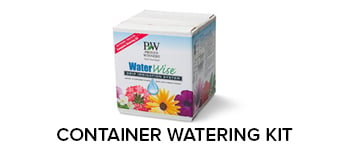How to Plant a Container Garden for Hummingbirds
A recipe for an easy five-plant container garden
This Hummingbird Haven collection displays a bounty of beautiful blooms through early fall, providing an abundance of nectar for hummingbirds to feed on before they leave for the season. Excerpted from Container Theme Gardens (c) Nancy J. Ondra. Photos by: (c) Rob Cardillo. Used with permission of Storey Publishing.
Birds bring sound and movement to your garden — elements that are easy to forget when you’re choosing flowers and foliage for your containers. For hummingbirds in particular, a small container garden can provide a smorgasbord of nectar-rich flowers. When attracting hummingbirds, the shape of the flower can be just as important as the color. Blossoms that are tubular or trumpet-shaped are perfect for their long, tapered bills. Red flowers are hummingbird magnets, but orange, yellow, and blue blooms can also be alluring.
For plant selection, see The Best 24 Plants to Attract Hummingbirds.
These rules of attraction are on display in this simple hummingbird container garden, created by Nancy Ondra, author of Container Theme Gardens. Suitable for a 14-inch pot or hanging basket, the five-plant combination includes ‘Bonfire’ begonia (Begonia boliviensis), cigar plant (Cuphea ignea), ‘Gartenmeister Bonstedt’ fuchsia (Fuchsia triphylla), Superbells Saffron calibrachoa (Calibrachoa ‘Uscali4134’), and ‘Tropical Bronze Scarlet’ canna (Canna). All of these plants are designed to provide a bounty of beautiful blooms from spring through early fall. They thrive in full sun to partial shade in the North, but may need some afternoon shade in warmer climates.
Cigar Plant
The red, tubular-shaped flowers of the cigar plant are especially intoxicating to hummingbirds. Alternatives include ‘Profusion Fire’ zinnia or ‘Vancouver Centennial’ zonal geranium.
‘Bonfire’ begonias feature delicate trumpet-shaped blooms and jagged red-edged leaves. Alternatives include Bonfire Choc Red begonia or another 6- to 8-inch-tall, low-mounded trailing plant with nectar-rich flowers, such as golden hardy fuchsia or ‘Summer Blaze’ verbena.
Fuchsia
The primary spring interest in this collection comes from the dark foliage of ‘Gartenmeister Bonstedt’ fuchsia. Alternatives include ‘Thalia’ fuchsia or another 12- to 18-inch-tall, upright plant with bell-shaped or tubular flowers, such as ‘Dwarf Red’ flowering maple or ‘Ruby Glow’ starflower.
Canna
These vibrant colors of this container show off especially well against the broad, deep purple leaves of the ‘Tropical Bronze Scarlet’ canna. Alternatives include ‘Lucifer’ or ‘Red Futurity’ canna or another 18- to 24-inch-tall, upright plant with nectar-rich flowers, such as ‘Acapulco Red’ hummingbird mint or ‘Lady in Red’ Texas sage.
The sunny, nectar-rich flowers of Superbells Saffron calibrachoa contrast beautifully with the bronze foliage of the fuchsia and the broad, deep purple leaves of ‘Tropical Bronze Scarlet’ canna.
If your hummingbird container will be located in a shady area, you can replace some of these plants with shade-loving alternatives. Ondra recommends using hummingbird attractors such as coleus (Solenostemon scutellarioides), impatiens (Impatiens), browallias (Browallia), shrimp plants (Justicia), wishbone flowers (Torenia), hostas (Hosta), and cardinal flower (Lobelia cardinalis).
Another tip: Hummingbirds tend to be very territorial and will chase away other hummers from their favorite flowers. To provide more feeding opportunities and spread the bounty, plant several containers and place them in different areas of your yard, such as by your front door, outside your kitchen window, and on your back patio.
Hummingbird Feeding Facts(Courtesy of worldofhummingbirds.com)
- Hummingbirds are very smart and can remember every flower they have been to and how long it will take a flower to refill with nectar.
- Hummingbirds do not drink though their beaks like a straw. They lap up nectar with their tongues, at a rate of about 13 licks per second.
- Hummingbirds are the only birds that can fly both forward and backward. They can also hover in midair, fly sideways, and even turn upside down.
- Hummingbirds will visit an average of 1,000 flowers per day to satisfy their voracious appetites.












